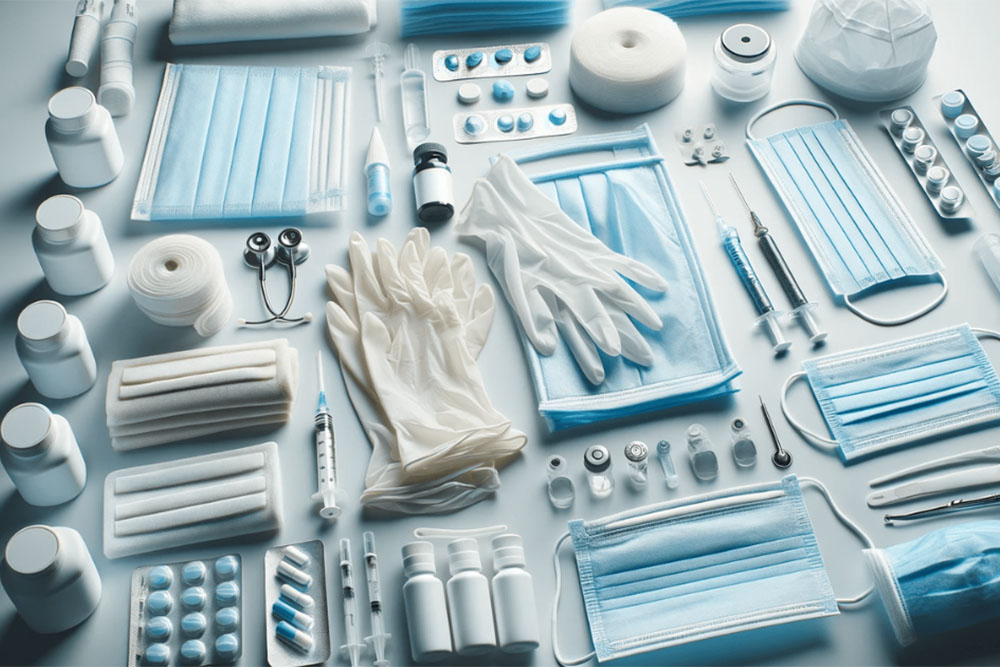In the healthcare industry, disposable medical supplies’ reliability and security are essential. These necessary supplies, which range from disposable syringes to surgical gloves, are vital to patient care, infection control, and medical operations. However, ensuring the integrity and longevity of disposable medical supplies presents a unique challenge, given the potential for contamination and degradation over time.
Enter preservatives – the unsung heroes that safeguard the quality and efficacy of these indispensable healthcare products. In this article, we delve into the science behind preservation and explore the profound impact of preservatives on disposable medical supplies.
Understanding Preservatives
Preservatives are chemical substances added to products to inhibit microbial growth, prevent degradation, and extend shelf life. In the context of disposable medical supplies, preservatives serve as guardians, protecting these critical items from contamination and spoilage. Common preservatives used in healthcare products include antimicrobial agents, antioxidants, and chelating agents, each with specific mechanisms of action and benefits.
Inhibiting Microbial Growth
One of the primary functions of preservatives in disposable medical supplies is to inhibit microbial growth and prevent the proliferation of harmful pathogens. Medical devices and supplies come into contact with patients’ skin, bodily fluids, and mucous membranes, creating opportunities for microbial colonization and infection transmission.
Antimicrobial preservatives, including iodine compounds, chlorhexidine, and benzalkonium chloride, efficiently kill or restrict the development of bacteria, fungi, and viruses. Manufacturers of disposable medical supplies can lower the incidence of healthcare-associated infections (HAIs) and guarantee patient safety by adding these antimicrobial preservatives to their products. From wound dressings to catheters, preservative-treated products provide an additional layer of protection against microbial contamination, particularly in clinical settings where infection control is paramount.
Preventing Degradation
In addition to inhibiting microbial growth, preservatives help prevent the degradation of disposable medical supplies caused by environmental factors such as light, oxygen, and moisture. Oxidation, hydrolysis, and photodegradation are common degradation pathways that can compromise the structural integrity and performance of medical devices and supplies over time.
Antioxidants, such as vitamin E and butylated hydroxytoluene (BHT), scavenge free radicals and inhibit oxidation reactions, preserving the quality and functionality of disposable healthcare products. Chelating agents like ethylenediaminetetraacetic acid (EDTA) are also used as preservatives to prevent degradation by binding to metal ions that catalyze oxidation and other degradation reactions.
By incorporating these preservatives into the formulation of disposable medical supplies, manufacturers can extend their shelf life and maintain their efficacy, ensuring that they remain safe and effective for patient use.
Ensuring Regulatory Compliance
To guarantee patient safety and product efficacy, certain regulatory criteria and quality standards apply to the use of preservatives in disposable medical supplies. Regulatory bodies, such as the European Medicines Agency (EMA) and the Food and Drug Administration (FDA) in the United States, require thorough testing and assessment of preservatives in order to determine their safety, effectiveness, and suitability for use in medical goods.
Pharmacopoeial standards outline specific tests and acceptance criteria for preservative efficacy, including microbial challenge tests, preservative effectiveness tests, and stability studies. These tests evaluate the ability of preservatives to inhibit microbial growth, prevent degradation, and maintain product quality under various storage and use conditions. By adhering to these regulatory requirements, manufacturers can demonstrate the safety and effectiveness of preservative-treated disposable medical supplies and ensure compliance with global quality standards.
Conclusion
Preservatives play a vital role in preserving the integrity, safety, and efficacy of disposable medical supplies, safeguarding these essential healthcare products from contamination, degradation, and spoilage.
By inhibiting microbial growth, preventing degradation, and ensuring regulatory compliance, preservatives contribute to the reliability and effectiveness of medical devices and supplies used in clinical settings worldwide.
As healthcare continues to evolve, the importance of preservatives in maintaining the quality and safety of disposable medical supplies remains as critical as ever, underscoring their indispensable role in modern healthcare practices.
